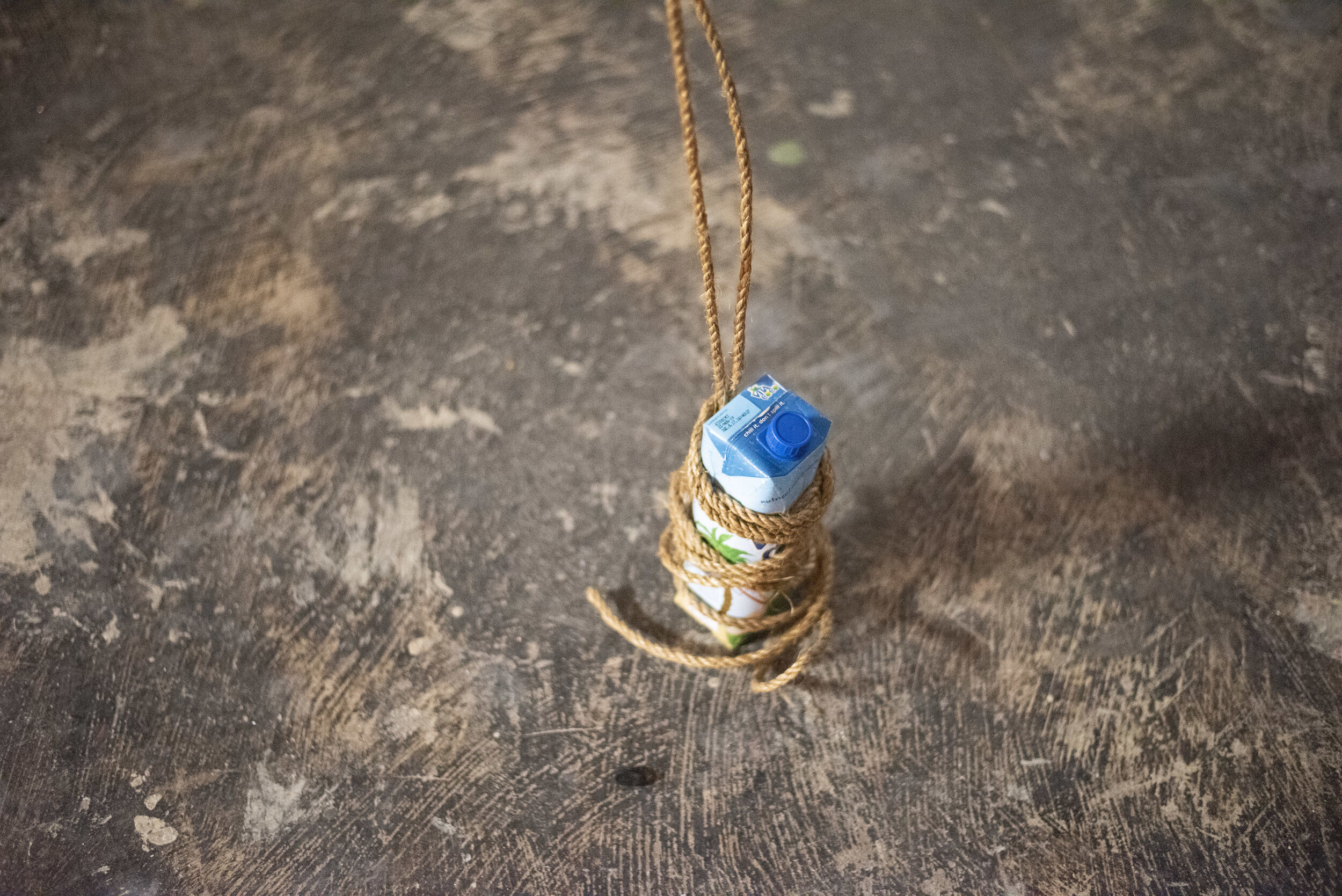BUHAY BUKO is a video work, created for the group exhibition Walking in the Sun at Human Resources LA curated by Jennelyn Tumalad and Robben Muñoz, that uses store-bought VitaCoco-brand coconut water, its packaging, and a system of low-budget props to crack open the term “coconut” often exchanged between members of a brown community — meaning to be “brown on the outside, white on the inside.”
BUHAY BUKO is approximately 3 minutes in length and involves abstracted close-up shots followed by medium and long shots of the artist’s brightly-lit face and skin dripping sweat with slight evidence of wind. As the slow revelation process continues and more of the environment is revealed in frame and focus, the viewer slowly understands that the “sweat” is actually coconut water product being poured directly from its packaging onto the artist’s head. BUHAY BUKO is projected onto a screen made of VitaCoco product packaging opened, turned inside out, flattened, glued, and suspended by coarse, brown Manila rope. The viewer can peer around the back of the screen and notice the VitaCoco product markings on the opposite side of the screen. Because the packaging contains some formed plastic elements, the screen will not lay flat, causing intended distortion to the final projected image. Lastly, a fan is placed in close proximity to the screen to provide a live aural element and its wind would cause the screen, anchored by full cartons of VitaCoco and Manila rope, to lightly sway— further distorting the image.
BUHAY BUKO draws into relationship the coconut and the body and, more extensively, liquid water/juice produced from the coconut and sweat produced from the body. This relationship is an imposed one, projected (or poured) onto the subject like the pejorative “coconut” term. There is an absurdity— like the VitaCoco’s packaging advertisements that romantically portray the product as being like sticking a straw into a freshly-cut coconut on a beach— to the inflicted association of the coconut and the body. The slur “coconut” deceptively misrepresents complexity of identity. BUHAY BUKO reflects this illusory element by revealing a farcical system employed to imitate natural sweat caused by the sun and cooled by the wind but with store-bought coconut water, flood lights, fans, and an assistant. By also drawing into relationship the Latin word “vita” and the Tagalog word “buhay”, which both translate in English to “life”, the work positions possibility to reclaim the “coconut” slur while also calling out the VitaCoco brand’s aim to portray a product that is pure, life-giving, and good for the aim of sales. Therefore BUHAY BUKO strongly incorporates VitaCoco packaging as a makeshift silver-screen, merging the gazes of advertisement, brown-on-brown colorism, the artist, and gallery viewership.
My thanks goes to Jennelyn Tumalad and Robben Muñoz who curated this piece while still in its conception. My many thanks also goes to Lexygius Calip and Gautama Ramesh who helped me produce the project.
BUHAY BUKO, 2019, Projected video, manila rope, Vita-Coco packaging, and fan. Performance assisted by Lexygius Calip. Video created with Gautama Ramesh. Photo detail documented by the artist and installation photo by Daisy Noemi (@daisynoemiphoto).


